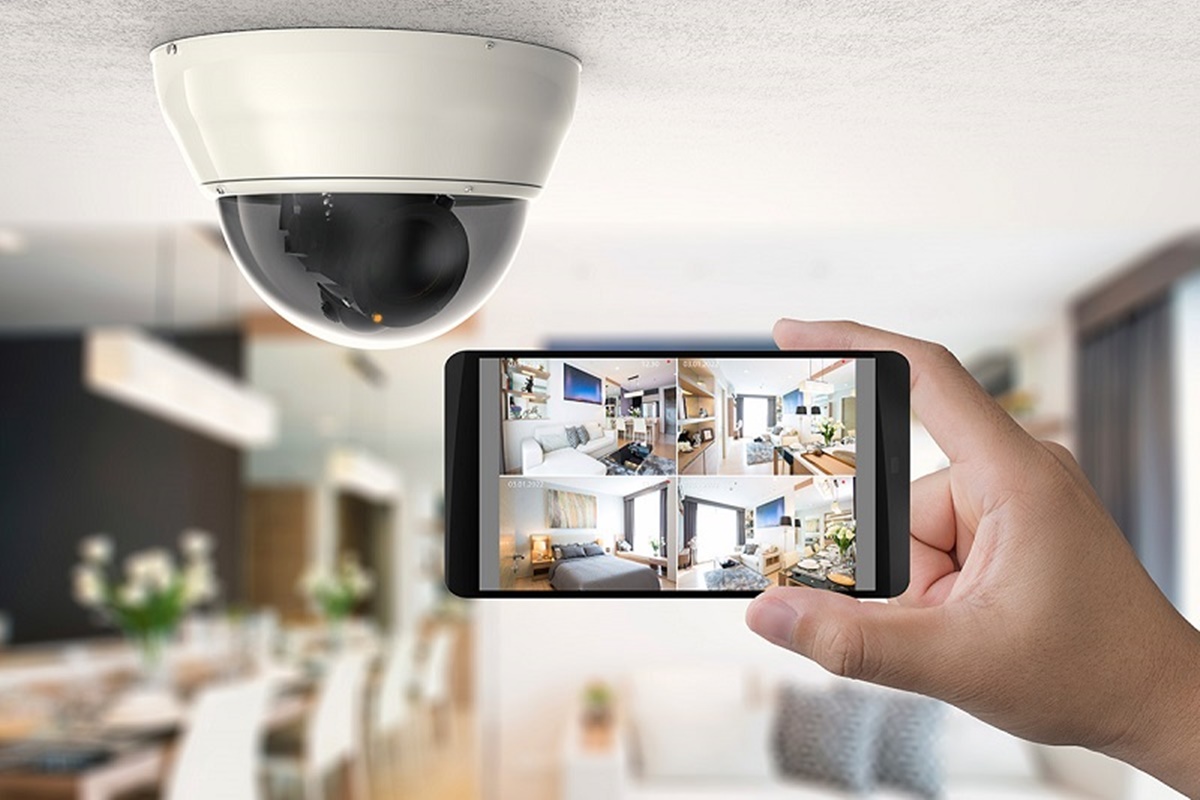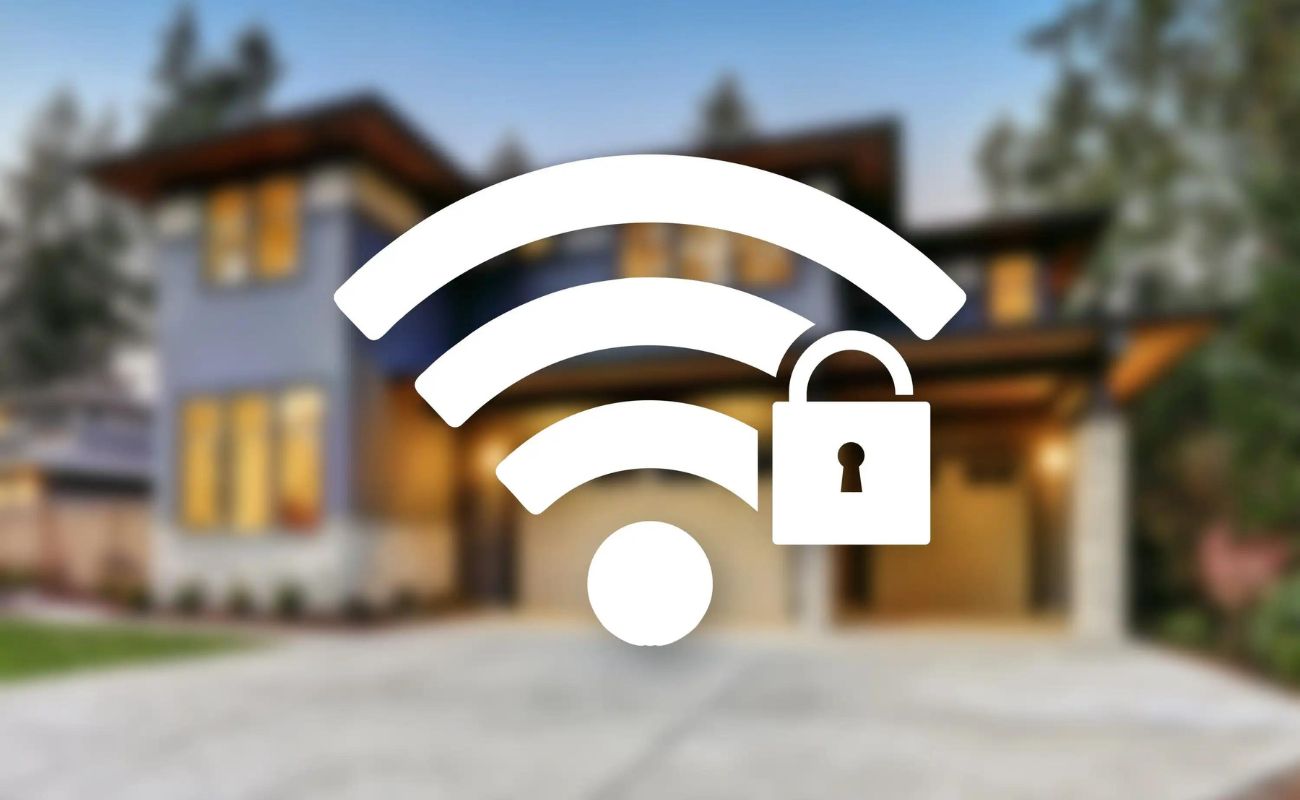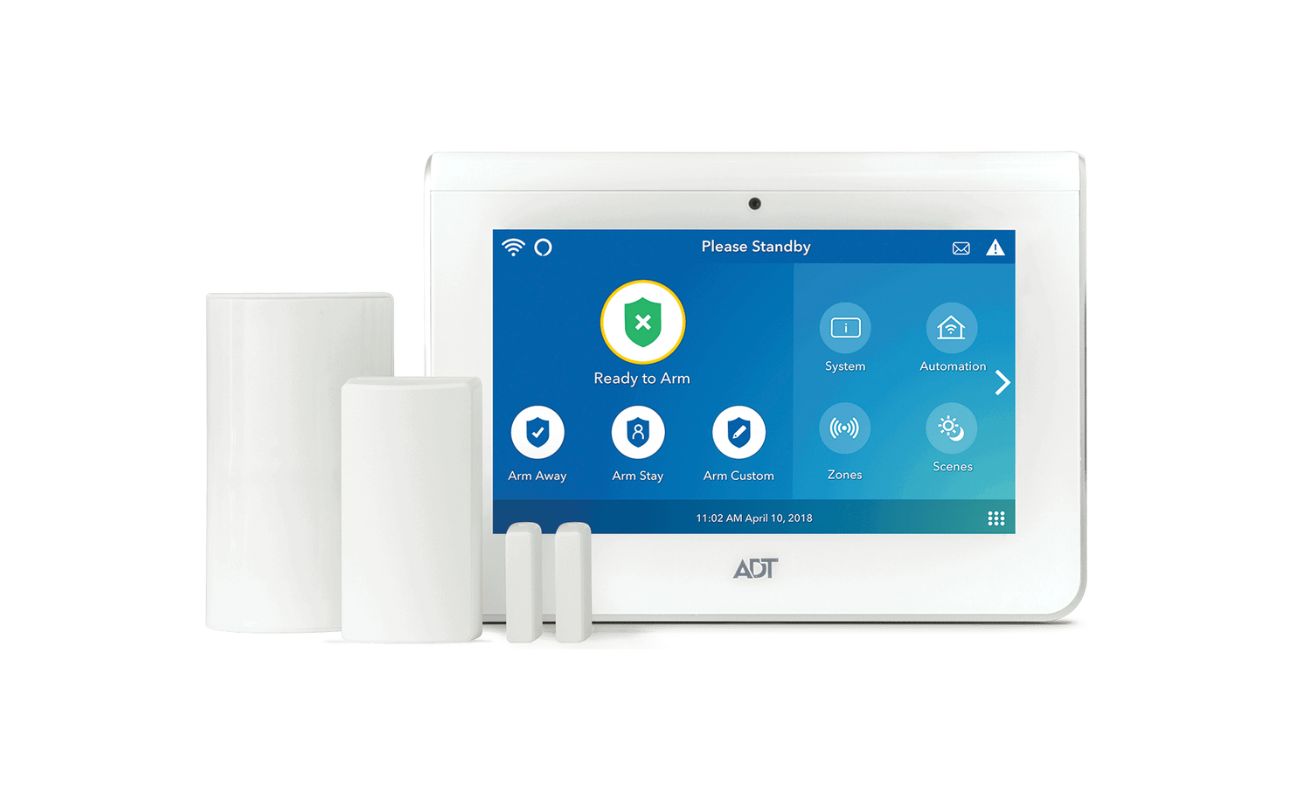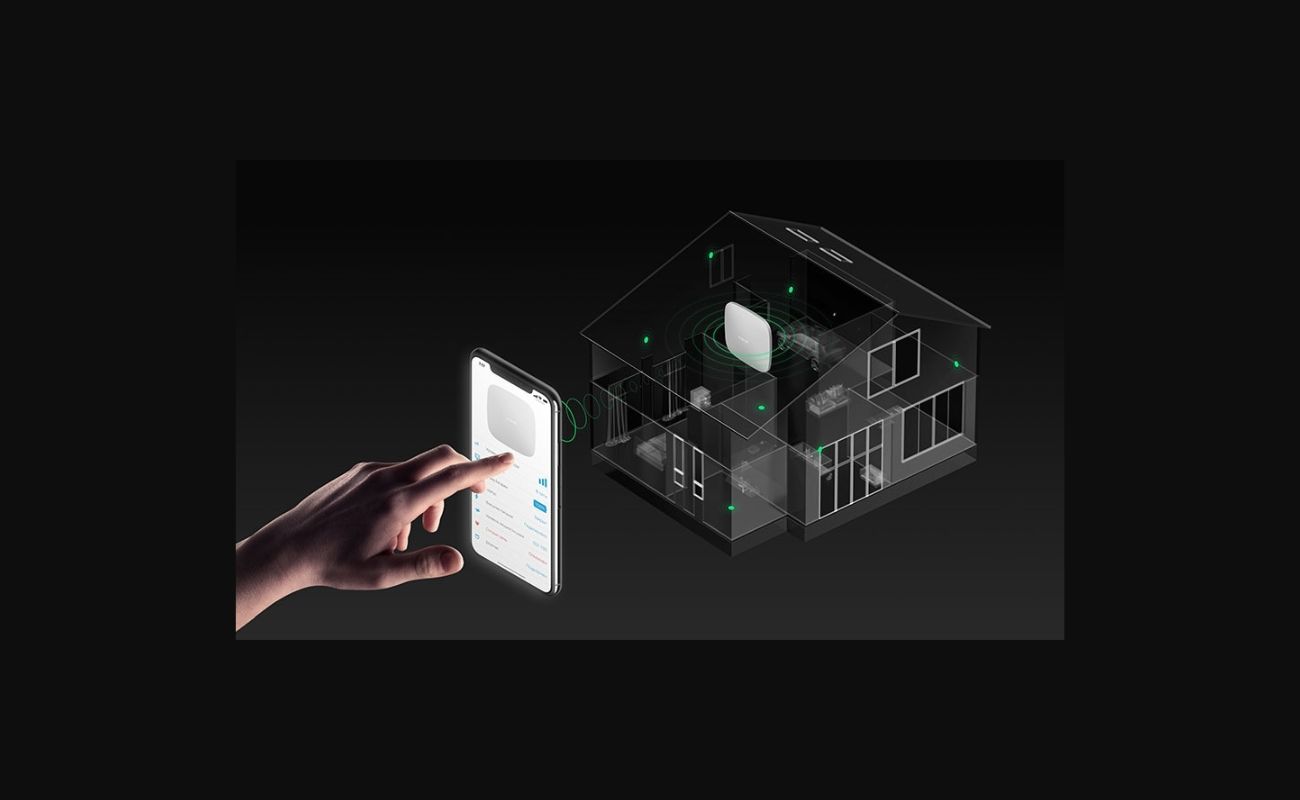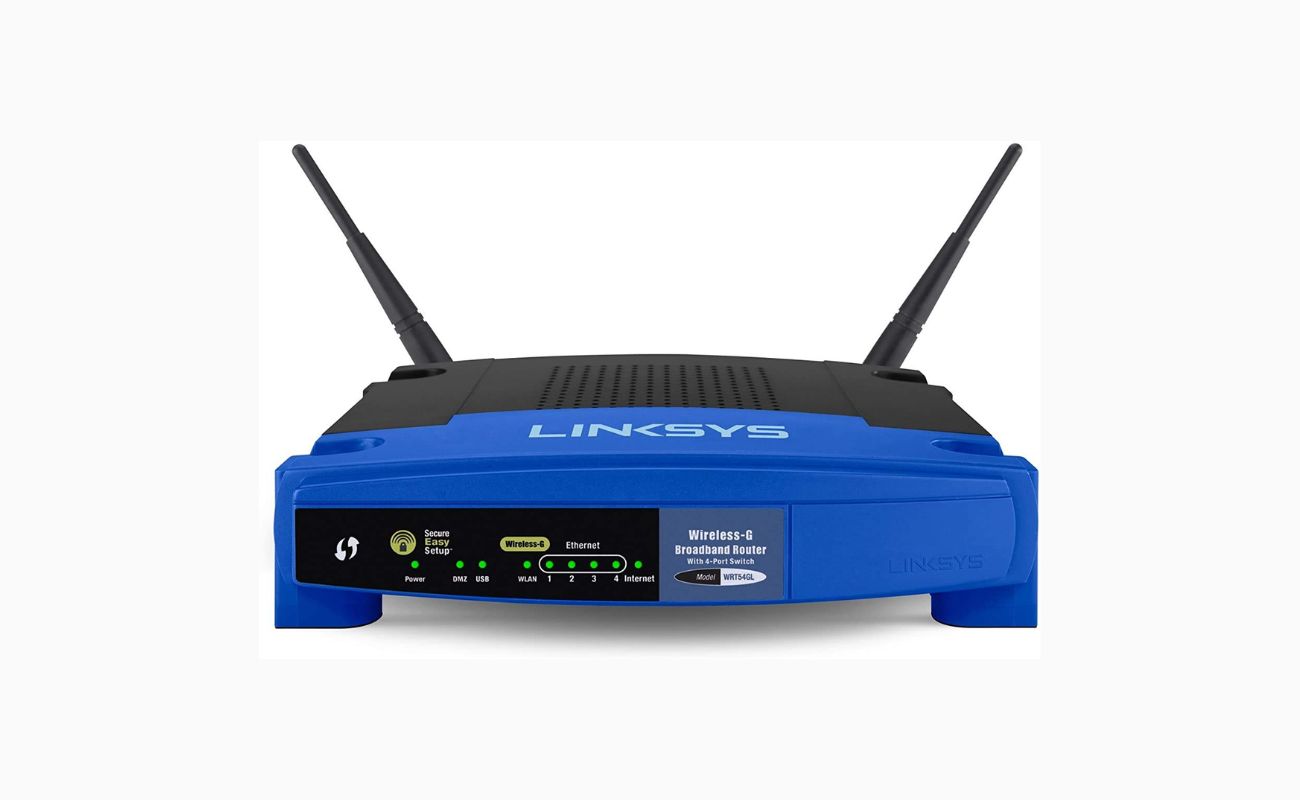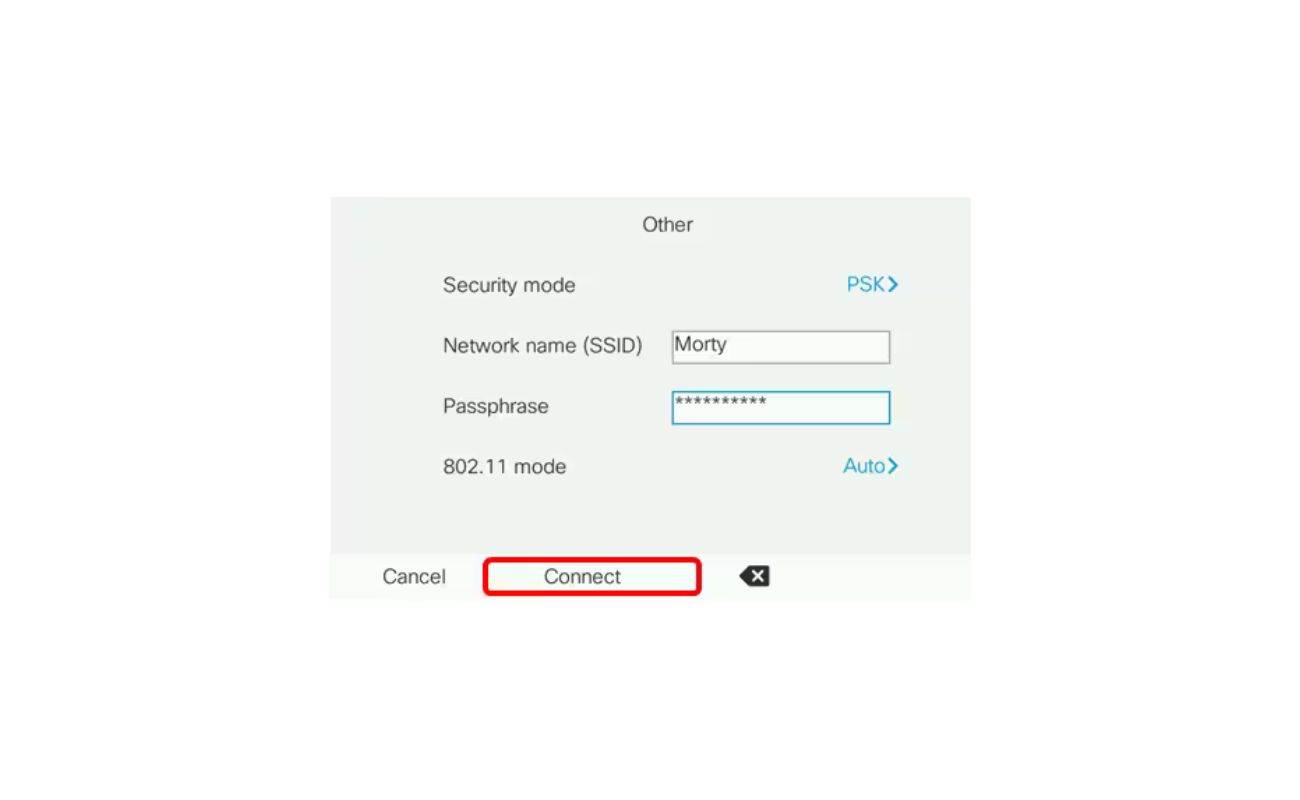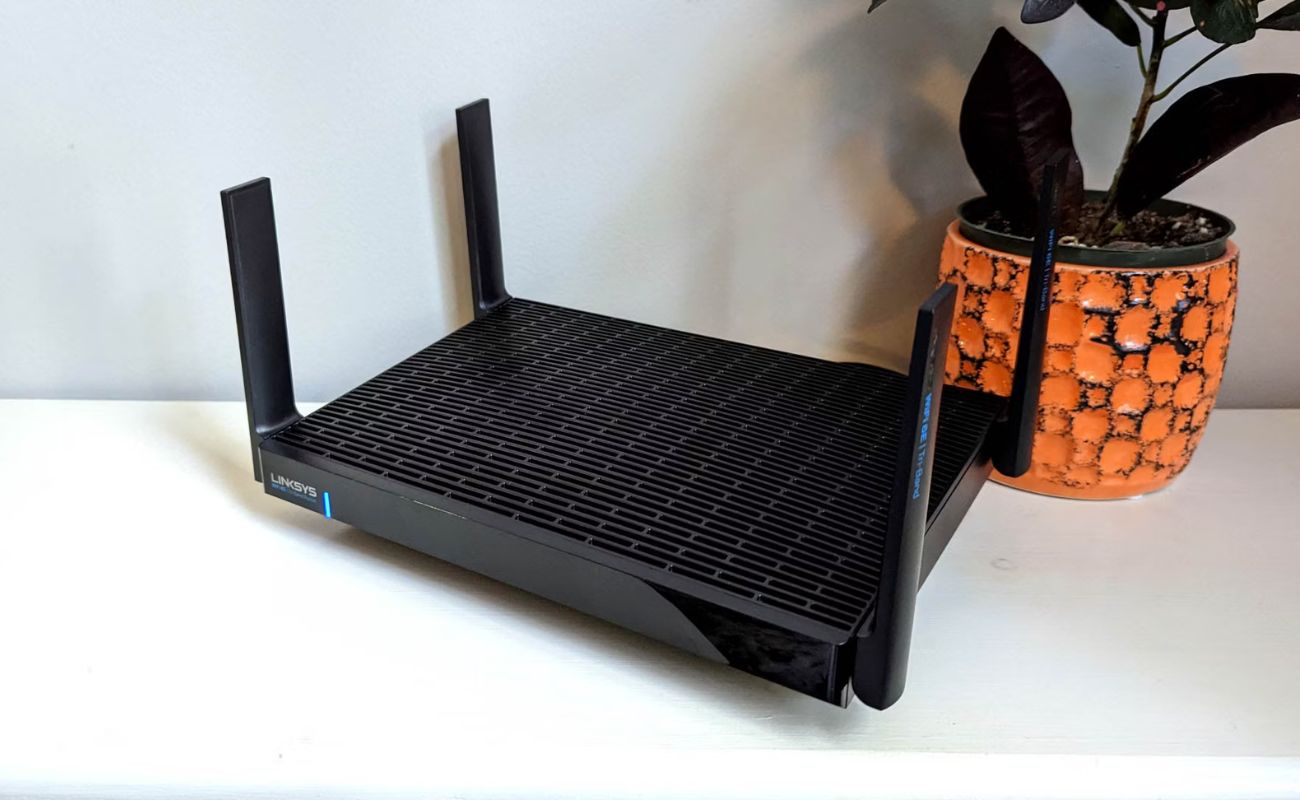Home>Home Security and Surveillance>Why Are Some Companies Not Upgrading Their Wireless Security?
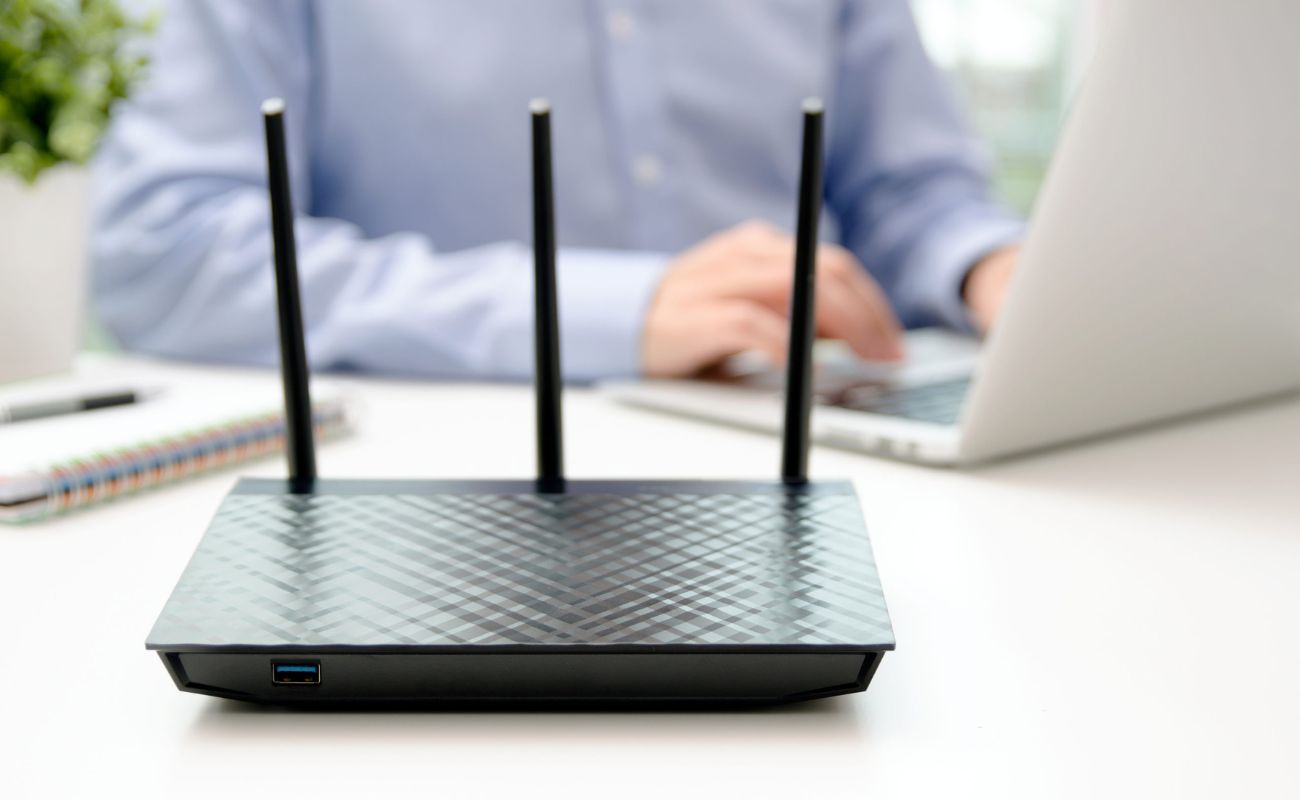

Home Security and Surveillance
Why Are Some Companies Not Upgrading Their Wireless Security?
Modified: March 6, 2024
Find out why some companies are not upgrading their wireless security and how it relates to home security and surveillance. Protect your assets and stay ahead of potential threats.
(Many of the links in this article redirect to a specific reviewed product. Your purchase of these products through affiliate links helps to generate commission for Storables.com, at no extra cost. Learn more)
Introduction
With the increasing prevalence of wireless technology in our lives, it is crucial to ensure the security of our wireless networks. Home security and surveillance play a vital role in safeguarding our properties and loved ones. However, despite the importance of wireless security, some companies are still not prioritizing or upgrading their wireless security systems, leaving them vulnerable to potential cyber threats and intrusions.
The purpose of this article is to delve into the various reasons why some companies are not upgrading their wireless security. By understanding these factors, we can better comprehend the challenges that these organizations face and explore potential solutions to mitigate the risks.
Key Takeaways:
- Upgrade wireless security to protect against cyber threats and intrusions. Overcome challenges like lack of awareness, budget constraints, and fear of disruption to ensure the safety of your data and business operations.
- Educate employees, invest in cost-effective solutions, and collaborate with experts to navigate the complexities of upgrading wireless security. Prioritize security to safeguard your business and customers from potential risks.
Lack of Awareness about Security Risks
One of the primary reasons why some companies are not upgrading their wireless security systems is the lack of awareness about the potential security risks. Many organizations are simply unaware of the evolving threat landscape and the vulnerabilities associated with outdated security protocols.
In today’s digital age, hackers and cybercriminals are becoming increasingly sophisticated. They are constantly searching for vulnerabilities in wireless networks to gain unauthorized access, steal sensitive information, or launch malicious attacks. From simple password cracking to more advanced techniques like man-in-the-middle attacks or network eavesdropping, the risks are vast and can have severe implications for both individuals and organizations.
Without a thorough understanding of these risks, companies may underestimate the need for upgrading their wireless security systems. They may mistakenly assume that their current security measures are sufficient, unaware that those measures may be outdated or inadequate against current threats.
Furthermore, the lack of awareness extends beyond cybersecurity risks to encompass physical security risks as well. Wireless security is not limited to protecting against cyber threats but also includes securing physical access to sensitive areas or assets. Companies that neglect to upgrade their wireless security systems may be unaware of vulnerabilities that could be exploited by unauthorized individuals, risking theft or physical damage.
Increasing awareness among organizations is crucial in addressing this issue. Companies should invest in employee education and awareness programs to ensure that employees are well-informed about the potential security risks associated with outdated wireless security systems. By enhancing their knowledge and understanding, organizations can better appreciate the importance of upgrading their security measures.
Limited Budget for Security Upgrades
Another significant factor contributing to the lack of wireless security upgrades is the limited budget that some companies have allocated for security measures. Implementing effective security measures can be a costly endeavor, especially when it comes to upgrading existing systems and infrastructure.
Companies, particularly smaller businesses or those operating on tight budgets, may prioritize funding for other areas of their operations, such as marketing, product development, or expansion. Unfortunately, this often leaves little room for investing in security upgrades, including wireless security systems.
Moreover, the cost of implementing wireless security solutions can vary significantly depending on the complexity of the network, the size of the organization, and specific security requirements. This can be a deterrent for companies who perceive their current security measures as “good enough” or who believe that they have more pressing financial priorities.
However, it is important to recognize that the potential cost of a security breach far exceeds the upfront investment required to upgrade wireless security systems. The fallout from a cyberattack or physical intrusion, including loss of sensitive data, damage to reputation, financial losses, and legal liabilities, can have devastating consequences for businesses.
Companies should consider working with managed security service providers (MSSPs) or consulting professionals who can provide cost-effective solutions tailored to their specific needs. MSSPs can offer expertise, advanced security technologies, and round-the-clock monitoring at a fraction of the cost of building an in-house security team.
Additionally, organizations can prioritize their security investments by conducting risk assessments and identifying critical areas that require immediate attention. By taking a proactive approach and allocating funds accordingly, companies can improve their security posture and gradually upgrade their wireless security systems.
Lastly, government grants, subsidies, or industry-specific funding programs may be available to assist organizations in securing their wireless networks. Companies should explore these options to mitigate financial constraints and ensure the safety of their networks and data.
Complexity of Upgrading Wireless Security Systems
An additional factor that hinders companies from upgrading their wireless security systems is the complexity involved in the process. Upgrading security systems can be a daunting task, particularly for organizations with limited technical expertise or resources.
Wireless security systems encompass a wide range of components, including access points, routers, firewalls, encryption protocols, and intrusion detection systems. Upgrading these systems may require a comprehensive assessment of the existing infrastructure, identification of vulnerabilities, and the implementation of new technologies and protocols.
The complexity of the upgrade process can be further amplified by the need to ensure compatibility with existing hardware, software applications, and network configurations. Incompatibilities or conflicts can result in downtime, network disruptions, or compatibility issues with other systems, impeding the smooth operation of the business.
Furthermore, wireless security upgrades often require the involvement of multiple stakeholders, including IT teams, network administrators, and security consultants. Coordinating efforts, managing timelines, and communicating effectively can be challenging for organizations, particularly those with decentralized or geographically dispersed operations.
To overcome these challenges, companies should consider engaging the services of experienced professionals who specialize in wireless security upgrades. These experts can provide guidance, develop a comprehensive upgrade plan, and ensure smooth implementation by minimizing disruptions and addressing technical complexities.
Investing in training and upskilling employees is also crucial. Providing IT teams with the necessary knowledge and certifications in wireless security can empower them to handle upgrades more efficiently and effectively. This includes staying updated on the latest technologies and best practices in the field.
Furthermore, a phased approach to upgrading wireless security systems can alleviate some of the complexities. Rather than attempting a full-scale upgrade all at once, organizations can prioritize critical areas, gradually implement improvements, and test for compatibility and performance before moving on to the next phase.
By acknowledging the complexity of upgrading wireless security systems and taking proactive measures to address it, companies can overcome these challenges and improve the overall security of their networks.
Reliance on Outdated Wireless ProtocolsOne of the reasons why some companies are not upgrading their wireless security systems is their reliance on outdated wireless protocols. Technology is constantly evolving, and new security protocols are being developed to address emerging threats and vulnerabilities.
Many organizations still rely on older wireless protocols, such as WEP (Wired Equivalent Privacy) or WPA (Wi-Fi Protected Access), which are known to have significant security flaws. These protocols were designed to provide basic security but are no longer considered sufficient to protect against sophisticated attacks.
Outdated protocols often lack strong encryption algorithms and are susceptible to brute-force attacks, unauthorized access, or packet sniffing. Hackers with malicious intent can exploit these vulnerabilities to gain access to sensitive information or intercept communications.
Furthermore, as technology advances, wireless devices and networks are becoming more interconnected. The rise of the Internet of Things (IoT) has resulted in a proliferation of smart devices, from smart thermostats and security cameras to smart locks and interconnected home systems. These devices often rely on wireless connections and can introduce additional security risks.
Upgrading wireless security systems involves migrating to more secure protocols like WPA2 (Wi-Fi Protected Access 2) or the newer WPA3, which offer stronger encryption algorithms and improved security features. However, the transition to these protocols may require hardware upgrades, firmware updates, and reconfiguration of existing networks.
Organizations may be hesitant to undertake these upgrades due to the time, effort, and potential disruptions involved. Moreover, legacy devices or systems that are incompatible with the newer protocols may present a substantial barrier to upgrading.
Nevertheless, it is crucial for companies to recognize the vulnerabilities associated with outdated wireless protocols and the imperative for upgrading. The adoption of modern encryption standards and protocols can significantly enhance the security of wireless networks, protect against unauthorized access, and mitigate the risk of data breaches.
Staying informed about the latest wireless security standards and seeking guidance from security experts can help organizations navigate the complexities of transitioning to newer, more robust protocols. By embracing these advancements and prioritizing the security of their wireless networks, companies can fortify their defenses against potential threats.
Read more: Why Do We Need Wireless Security?
Lack of Sufficient In-House Expertise
Another obstacle preventing companies from upgrading their wireless security systems is the lack of sufficient in-house expertise. Implementing and managing wireless security measures requires specialized knowledge and technical skills that may not be readily available within the organization.
Wireless security is a complex field that encompasses various disciplines, including network architecture, encryption protocols, intrusion detection, and vulnerability management. It requires a deep understanding of cybersecurity principles and the ability to stay abreast of the latest threats and countermeasures.
Smaller organizations, in particular, may struggle to allocate resources for hiring dedicated IT security personnel who possess the necessary expertise. They may rely on general IT staff who may have limited knowledge and experience in wireless security. This lack of specialization can hinder the effective implementation and management of robust wireless security measures.
Moreover, even larger organizations with dedicated IT security teams may face challenges in keeping up with the rapidly evolving nature of wireless security. Cyber threats are constantly evolving, and attackers are employing sophisticated techniques to exploit vulnerabilities. In-house teams may struggle to stay updated on the latest security practices and technologies.
To overcome this challenge, companies have a few options. One approach is to invest in training and certification programs for existing IT staff to enhance their knowledge and expertise in wireless security. This can help bridge the skills gap and empower employees to manage and maintain the upgraded security measures effectively.
Another option is to outsource certain aspects of wireless security to managed security service providers (MSSPs) or consulting firms that specialize in wireless security. These external experts can provide the necessary knowledge and capabilities to design, implement, monitor, and manage robust wireless security systems, freeing up internal resources for other critical tasks.
In some cases, organizations may choose to collaborate with external partners or consultants on a long-term basis. This can be especially beneficial for smaller companies that may not have the resources to support a full in-house security team. The collaboration allows companies to tap into the expertise of professionals who have experience in wireless security and can provide ongoing support and guidance.
By recognizing the importance of specialized expertise in wireless security and exploring opportunities to augment in-house capabilities, companies can overcome the lack of resources and ensure the effective implementation and management of their wireless security systems.
Regularly updating your wireless security is crucial to protect your company from cyber threats. Set up automatic updates and regularly check for new security patches to ensure your network is always protected.
Perception of Low Risk and Importance of Wireless Security
The perception of low risk and importance of wireless security is another reason why some companies may not prioritize upgrading their wireless security systems. They may believe that their network is not a target for cyberattacks or that the potential consequences of a security breach are minimal.
This perception can arise for several reasons. Firstly, organizations may underestimate their attractiveness as a target to cybercriminals or may believe that their industry or size makes them less susceptible to attacks. However, the reality is that attackers often target any organization that possesses valuable data or resources, regardless of industry or size.
Secondly, companies may assume that since they have not experienced any security incidents in the past, their existing security measures are sufficient. This complacency can be dangerous, as cyber threats are constantly evolving, and attackers are becoming more sophisticated in their techniques.
Furthermore, the importance of wireless security may be overlooked due to a lack of understanding about the potential consequences of a security breach. Organizations may not fully grasp the potential financial, reputational, and legal ramifications that can result from a successful attack.
A security breach can lead to the loss or theft of sensitive customer data, which can have a severe impact on a company’s reputation and trustworthiness. It can also result in financial losses due to legal penalties, lawsuits, or business disruption. In some cases, organizations may also incur costs associated with remediation, such as forensic investigations, system repairs, or data recovery efforts.
Companies can overcome this perception by increasing awareness and education about the risks and consequences of inadequate wireless security. Training programs and workshops can help employees understand the importance of maintaining strong security measures and staying vigilant against potential threats.
Sharing real-life examples of security breaches and their implications can serve as a wake-up call, demonstrating the potential impact on both the company and its stakeholders. By fostering a culture of awareness and prioritizing wireless security, organizations can better protect their assets and mitigate potential risks.
Additionally, companies should stay informed about industry trends and best practices in wireless security. This includes regularly updating security policies, implementing strong authentication measures, and conducting regular vulnerability assessments and penetration tests.
Ultimately, companies need to recognize that wireless security is not an optional add-on but a critical aspect of their overall security strategy. By addressing the perception of low risk and illuminating the importance of wireless security, organizations can take the necessary steps to enhance their security posture and safeguard their sensitive data.
Inadequate Understanding of Potential Consequences
An inadequate understanding of the potential consequences of inadequate wireless security is another reason why some companies may not prioritize upgrading their security systems. Many organizations fail to fully grasp the extent of damage that can result from a security breach and underestimate the associated risks.
For starters, a security breach can lead to the exposure or theft of sensitive data, such as customer information, financial data, or intellectual property. This can have serious implications for both the affected individuals and the company itself. The loss of trust and damage to the company’s reputation can be difficult to recover from and can result in significant financial losses.
In addition to reputational damage, there can be legal and regulatory consequences for organizations that fail to adequately protect customer data. Data protection and privacy laws, such as the General Data Protection Regulation (GDPR) and the California Consumer Privacy Act (CCPA), impose strict obligations on companies regarding the security and handling of personal data. Failure to comply with these regulations can lead to substantial fines and legal penalties.
Moreover, a security incident can disrupt normal business operations, leading to downtime and financial losses. Restoring systems and recovering from an attack can be time-consuming and costly, impacting productivity and revenue generation. It is important to recognize that the potential consequences of a security breach extend far beyond immediate financial losses and can have far-reaching implications for the long-term viability of the business.
Addressing this inadequate understanding requires organizations to invest in educating their employees about the potential consequences of lax wireless security. Employee training and awareness programs can help employees recognize the importance of maintaining strong security measures and understanding the potential impact of a security breach.
Additionally, seeking external expertise and consulting with security professionals can offer valuable insights into the potential consequences of inadequate security. These professionals can help organizations conduct comprehensive risk assessments and provide a clear picture of the vulnerabilities and potential repercussions of security breaches.
Companies should also stay updated on industry trends, best practices, and the ever-evolving threat landscape. Regularly reviewing and updating security policies and procedures ensures that the organization remains proactive in addressing potential risks and protecting against new threats.
By fostering a culture of security awareness and ensuring a comprehensive understanding of the potential consequences, organizations can better prioritize and invest in the upgrade of their wireless security systems.
Fear of Disruption to Business Operations during Upgrade
A common concern that prevents companies from upgrading their wireless security systems is the fear of disruption to their business operations. The process of upgrading security measures can be perceived as time-consuming, complex, and potentially disruptive to the normal flow of business activities.
Organizations may worry that implementing new security protocols or making changes to the existing infrastructure could lead to system downtime, network disruptions, or compatibility issues with other systems or devices. These concerns can be particularly significant for companies that rely heavily on their wireless networks for daily operations or have a large number of devices connected to their network.
However, it is crucial to remember that the potential disruption caused by a security breach can have far greater consequences than the temporary inconvenience of implementing security upgrades. A security incident can result in prolonged downtime, data loss, financial losses, and reputational damage, which can be much more challenging to recover from.
To overcome this fear and minimize disruption during the upgrade process, organizations can implement careful planning and communication. A phased approach can be adopted, where upgrades are carried out incrementally, allowing for testing and validation before moving to the next phase. This minimizes the risk of system-wide disruptions and provides an opportunity to address any compatibility or performance issues that may arise.
Conducting a thorough risk assessment prior to the upgrade can help identify critical areas that need immediate attention and determine the potential impact on business operations. By prioritizing these areas, organizations can focus their efforts on minimizing disruption to essential functions while gradually implementing security upgrades.
Open lines of communication with stakeholders, including employees, customers, and vendors, are essential during the upgrade process. Clear communication about the purpose of the upgrade, the anticipated benefits, and any potential disruptions can help manage expectations and alleviate concerns. Providing training or support to employees can also ensure they are prepared for changes and understand any impact on their day-to-day tasks.
Engaging the expertise of third-party service providers who specialize in wireless security upgrades can also help minimize disruptions. These professionals have the experience and knowledge to implement upgrades efficiently, identify potential issues, and provide ongoing support during the transition.
By addressing these fears and taking proactive measures to minimize disruption, companies can upgrade their wireless security systems while maintaining the smooth operation of their business. Emphasizing the long-term benefits and the potential risks of neglecting security can help organizations overcome their fear and prioritize the necessary upgrades.
Read more: Why Some Mirrors Create Distortions
Lack of Regulatory Requirements or Industry Standards
A significant challenge that may hinder companies from upgrading their wireless security systems is the lack of regulatory requirements or industry standards mandating such upgrades. Without clear guidelines or obligations imposed by regulatory bodies or industry associations, organizations may perceive wireless security upgrades as optional rather than essential.
In some industries, there may be minimal regulatory oversight regarding wireless security, leaving companies to determine their own security measures and protocols. This can lead to a lack of consistency and varying levels of security across organizations within the same sector.
Additionally, without industry-wide standards, companies may struggle to assess the adequacy of their existing security measures. They may lack benchmarks or reference points to evaluate their current security posture and may consequently assume that their security measures are sufficient.
The absence of regulatory requirements or industry standards can create a sense of complacency, where organizations may prioritize other initiatives over upgrading their wireless security systems. This can leave them vulnerable to evolving cyber threats and potential security breaches.
However, organizations should not solely rely on regulatory requirements or industry standards as the driving force for upgrading their wireless security systems. They must consider the potential risks and consequences of inadequate security practices, even in the absence of regulatory mandates.
While there may be no mandatory standards, companies can reference existing security best practices and frameworks, such as the NIST Cybersecurity Framework or ISO 27001, to guide their security efforts. These frameworks provide a comprehensive set of guidelines and controls for establishing a robust security program.
Collaboration among industry players can also be beneficial. Organizations within a particular sector can work together to establish industry standards and share best practices, fostering a collective commitment to security excellence.
Moreover, organizations should consider the ever-evolving nature of cyber threats and the likelihood of future regulatory requirements. Proactively upgrading wireless security systems demonstrates a commitment to protecting sensitive data and staying ahead of potential liabilities.
Ultimately, while the absence of regulatory requirements or industry standards can create a challenge, companies should not rely solely on external obligations. They should take it upon themselves to thoroughly assess the risks, adopt recognized best practices, and continually reassess and upgrade their wireless security systems to protect their data, customers, and overall business operations.
Conclusion
Upgrading wireless security systems is a critical step in protecting businesses and individuals from potential cyber threats and intrusions. However, there are several factors that can hinder companies from prioritizing these necessary upgrades. From the lack of awareness about security risks to the fear of disruption to business operations, each of these challenges must be addressed to ensure the overall security and well-being of organizations.
First and foremost, organizations need to enhance awareness about the evolving threat landscape and the potential vulnerabilities associated with outdated wireless security systems. Educating employees and stakeholders about the risks and consequences of inadequate security is crucial in fostering a culture of security awareness and understanding.
In addition, financial constraints can often pose a barrier to upgrading wireless security systems. However, companies need to recognize that the upfront investment required for security upgrades pales in comparison to the potential financial losses, reputational damage, and legal liabilities that can result from a security breach. Exploring cost-effective options, such as engaging with managed security service providers or seeking external funding sources, can help overcome these financial limitations.
The complexity of upgrading wireless security systems can also be overwhelming, particularly for organizations lacking sufficient in-house expertise. By investing in training and upskilling employees or collaborating with external experts, companies can navigate the complexities of wireless security upgrades and ensure effective implementation and management.
Perceptions of low risk and inadequate understanding of potential consequences are additional challenges that must be addressed. Increasing awareness about the potential impact of security breaches and sharing real-life examples of the consequences can shift the mindset and guide companies to prioritize wireless security upgrades.
Furthermore, organizations may fear disruptions to their business operations during the upgrade process. However, careful planning, a phased approach, and effective communication can minimize disruptions and ensure a smooth transition to upgraded security systems.
Lastly, the lack of regulatory requirements or industry standards should not be a deterrent for companies to prioritize wireless security upgrades. Organizations should proactively strive for security excellence by adopting recognized best practices, referencing industry frameworks, and collaborating with peers to establish industry standards.
In conclusion, upgrading wireless security systems is vital in today’s digital age. By addressing the challenges of awareness, financial constraints, expertise, perceptions, and regulatory requirements, organizations can fortify their defenses against potential threats and protect their sensitive data, customers, and reputation. Prioritizing wireless security is not only an investment in the present but also an investment in the future sustainability and success of the business.
Frequently Asked Questions about Why Are Some Companies Not Upgrading Their Wireless Security?
Was this page helpful?
At Storables.com, we guarantee accurate and reliable information. Our content, validated by Expert Board Contributors, is crafted following stringent Editorial Policies. We're committed to providing you with well-researched, expert-backed insights for all your informational needs.


